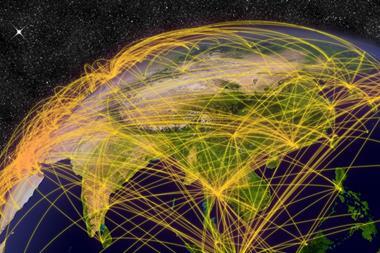The US administration’s strategy towards China appears to be hardening. Some commentators – such as Niall Ferguson in the Sunday Times – have argued that the trade war will last much longer than most people expect and could even escalate into other forms of warfare.
Among Europeans there often appears to be some sympathy towards president Donald Trump’s objectives with regard to China – although pretty universal condemnation of his approach.
The argument goes that Trump’s criticism of China’s behaviour with regard to trade is justified, and the impact post-WTO accession on the US and European economies has been pronounced, particularly in terms of job losses.
The criticism of Trump has not been in his objective of reining in China’s exports, but rather of his unilateral approach to doing so. Some would say if he had taken Europe and Japan on board and adopted a joint stance towards China, that would have been more acceptable.
Jeffrey Sachs, in an impassioned article for CNN, makes the opposite case. “China is not an enemy. It is a nation trying to raise its living standards through education, international trade, infrastructure investment, and improved technologies,” he declares.
As he then adds, China is merely doing what any country should do when confronted with the historical reality of being poor and far behind more powerful countries. It is unacceptable that China is being made a scapegoat for rising inequality in the US. The fact that certain workers face increasing competition due to changing global circumstances is a normal phenomenon of market competition.
Instead of blaming China, says Sachs, the US should be taxing the soaring corporate profits of its own multinational corporations, and using the revenues “to help working-class households, rebuild crumbling infrastructure, promote new job skills and invest in cutting-edge science and technology”.
The West is also wrong to portray China as purely as a low-cost manufacturer – and often as a low-tech, low-quality copycat that prospers through stealing western intellectual property.
While there may be some truth in these stereotypes, the overall story has too often been dominated by ignorance and prejudice. Innovation in China is happening and the pace of it is increasing: one only has to look at the scale of China’s patent applications for some evidence (albeit crude).
The West has to face up to the issue that the era of generating growth in China through manufacturing alone has come to an end as wage costs go up. Catching up with the West inevitably means climbing up the intellectual property ladder – and China is well positioned to do that.
China’s growing advantages
China has a strong focus on education and is producing more graduates than ever from its higher education institutes – eight times more than the US in science and technology, according to the World Economic Forum.
The sheer scale of China’s manufacturing capability has shaped the world. It has such large economies of scale that it can outspend its competitors on research, factories, fixed assets, marketing and other costs, creating an even stronger competitive advantage over time.
Foreign manufacturers entering China tend to focus on first-tier cities such as Beijing and Guangzhou, but the medium- to high-end market this represents only accounts for 25% of the total Chinese market in, for example, medical equipment. Chinese companies initially win by cost, and they have the ability to distribute products to the smaller, hard-to-reach markets outside tier-one cities. The profits from high-margin businesses can then be reinvested in achieving scale and developing technology.
Innovation often comes after the firm has achieved financial strength though the domestic market. Huawei is a good example of this approach, which has enabled it to succeed on a global basis. It now spends 10% of its annual income on research and development, so it can easily compete on innovation with its western peers. Trump’s attempts to hobble Huawei may backfire in the longer term if China is forced to replace key US components by developing their own.
In some areas, China is already a leader: solar energy, wind power and related clean technologies are good examples. In biotech, Chinese innovation is still in the early stages – but it is coming.
China is making the some of its biggest advances in areas such as the internet and artificial technology (AI), powered by the government and private sector. Some 43% of the top academic papers relating to AI in 2015 were published with one or more Chinese researchers, regardless of where in the world the research was conducted.
As Sachs points out in his CNN article, a trade war with China won’t solve the economic problems of the US. Instead the US needs homegrown solutions: “affordable health care, better schools, modernized infrastructure, higher minimum wages and a crackdown on corporate greed.”
And as he concludes, the US has far more to gain through co-operation with China than through reckless and unfair provocation.



















.jpg)







No comments yet